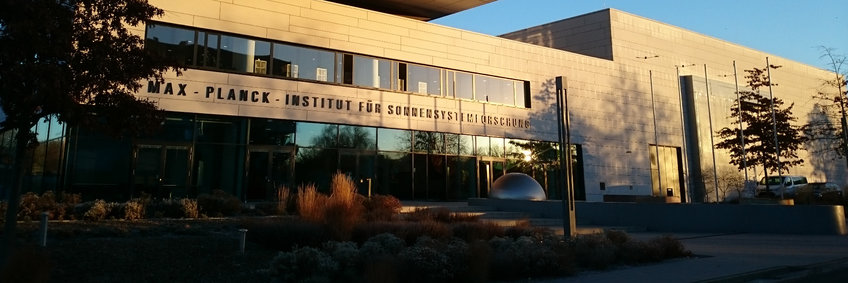About the Institute
Our cosmic home is the main focus of the scientific research performed in the Max Planck Institute for Solar System Research (MPS): the solar system with its planets and moons, its comets and asteroids, and of course with the Sun.
The researchers develop and build scientific instruments for investigating these bodies in cooperation with engineers who are highly qualified and experienced specialists. The instruments are mainly used in outer space, which is made possible through the institute’s collaboration in numerous missions of international space agencies such as ESA and NASA. The data analysis and interpretation is complemented by theoretical models and simulations.
The Max Planck Institute for Solar System Research succeeded the Max Planck Institute for Aeronomy in 2004 by a simple name change. The institute was founded in 1957 in Katlenburg-Lindau.The institute is located close to the Northern Campus of the University of Göttingen. Before, it's home was Katlenburg-Lindau, a small town 30 kilometers outside of Göttingen.
The institute is organized in three scientific departments and further research groups.
The focus of this department is the solar interior, the solar atmosphere, the solar magnetic field, the heliosphere, and the interplanetary medium, as well as solar radiation and solar energetic particles. The balloon-mission Sunrise, a balloon-borne solar observatory, is managed by this department. The mission investigates our central star from a height of about 35 km. In addition to several other participations in space missions, the department significantly contributes to the ESA's Solar Orbiter.
This department investigates the interior, the surfaces, atmospheres, ionospheres, and magnetospheres of planets and their moons, as well as comets and asteroids. The department currently contributes or has contributed to important space missions such as the ESA's missions JUICE to the Jovian system, BepiColombo to Mercury and Rosetta to comet Churyumov-Gerasimenko as well as NASA's missions InSight to Mars and Dawn to the asteroid belt.
Helioseismology and asteroseismology are tools that use the oscillations of the Sun and stars to probe their interior structure and dynamics. This allows us to test and refine the theory of stellar structure and evolution, thereby bringing us closer to understanding solar and stellar magnetism. The department hosts the German Data Center for NASA's Solar Dynamics Observatory, and is preparing to host the data center of ESA's exoplanet hunting mission, PLATO.
All activity phenomena in the Sun and other stars originate from their magnetic fields, which arise due to a hydromagnetic dynamo that converts kinetic energy into magnetic. Even the solar dynamo remains enigmatic due to the extreme complexity of phenomena related to it. Observations of other stars provide important constraints on the dynamo mechanisms. The work of the group combines these observations with theory and 3D numerical simulations to gain better understanding of the solar and stellar dynamos.
Turbulence plays a very important role in many applications, ranging from geophysics and astrophysics to engineering. In our solar system, turbulence is often driving by thermal effect, rotation, and magnetic field. We study the physics of turbulence, focusing on convection and dynamos.
more
Our Sun is a special star - not only for the reason that it is vital for us and life on Earth, but even in comparison to other stars, which are of similar size, luminosity, and magnetic properties. The group "Connecting Solar and stellar Variables" searches of the reason of this difference by looking at a link between the Sun and stars. Why do these bodies behave so similarly and yet so differently? And can findings from solar research be transferred to distant stars?
The group focusses on understanding the activity of comets and asteroids. These bodies are remnants of planet formation. However, in the 4.5 billion years since their formation, these bodies have been subject to various processes that influenced their structure and composition. Studying activity leads us to better understand how comets and asteroids evolve with time, and what the properties of their surfaces and sub-surface layers are.
In order to learn something about the Sun or other stars we usually have to rely on indirect observations, i.e. we can only observe effects of an unknown quantity. This group works on the corresponding inverse problem to reconstruct the unknown cause from the observed effect. A particular focus is on the reconstruction of convection fields from measurements of oscillations of the solar surface.
more








